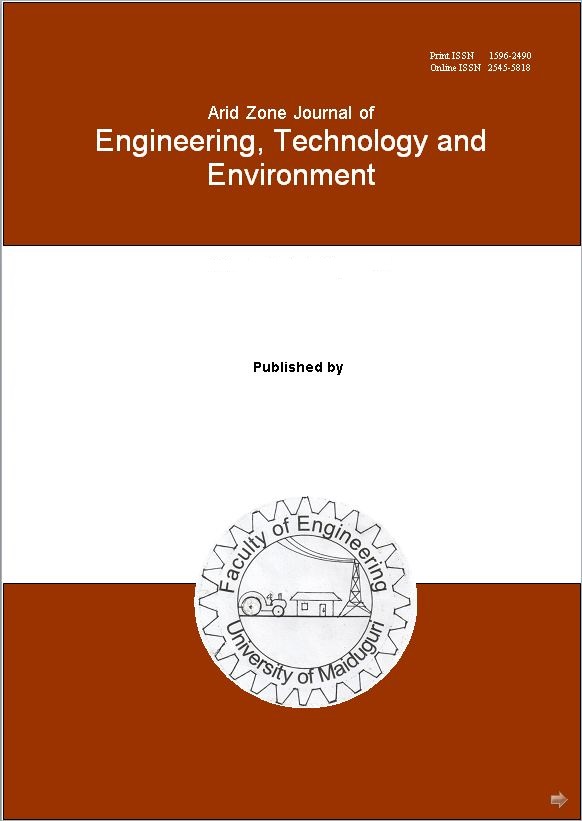Abstract
Bin data for dry bulb temperature, relative humidity and two-dimensional bin for dry bulb temperature - relative humidity were compiled using a fifteen-year hourly dry bulb temperature and relative humidity data for Maiduguri and Yola. The data were collected from Nigerian Meteorological Agency (NiMet), Oshodi, Lagos. The bins sizes of 1°Cand 5% were used for dry bulb temperature and relative humidity respectively. The number of hours in each month in which dry bulb temperature ≥ 32.2°C and relative humidity ≤ 50% during which appreciable evaporative cooling can occur and when dry bulb temperature/relative humidity pair was in the comfort zone were determined. The modal bin for dry bulb temperature (TDB) and relative humidity (RH) are 25 - 26°Cand 15-20% for Maiduguri and 25-26°Cand 90-95% for Yola. April and March are the months that appreciable evaporative cooling usually occurs in the chosen locations and evaporative coolers could be applied during the months of March up to May. But from July to September the evaporative coolers perform poorly in both locations. During the months of October to February, low monthly costs of running the refrigerators and air conditioners significantly different from other months of the year, were indicated by the results.
Copyright of the paper named above is hereby assigned and transferred to the Arid Zone Journal of Engineering, Technology and Environment published by University of Maiduguri, Nigeria.

